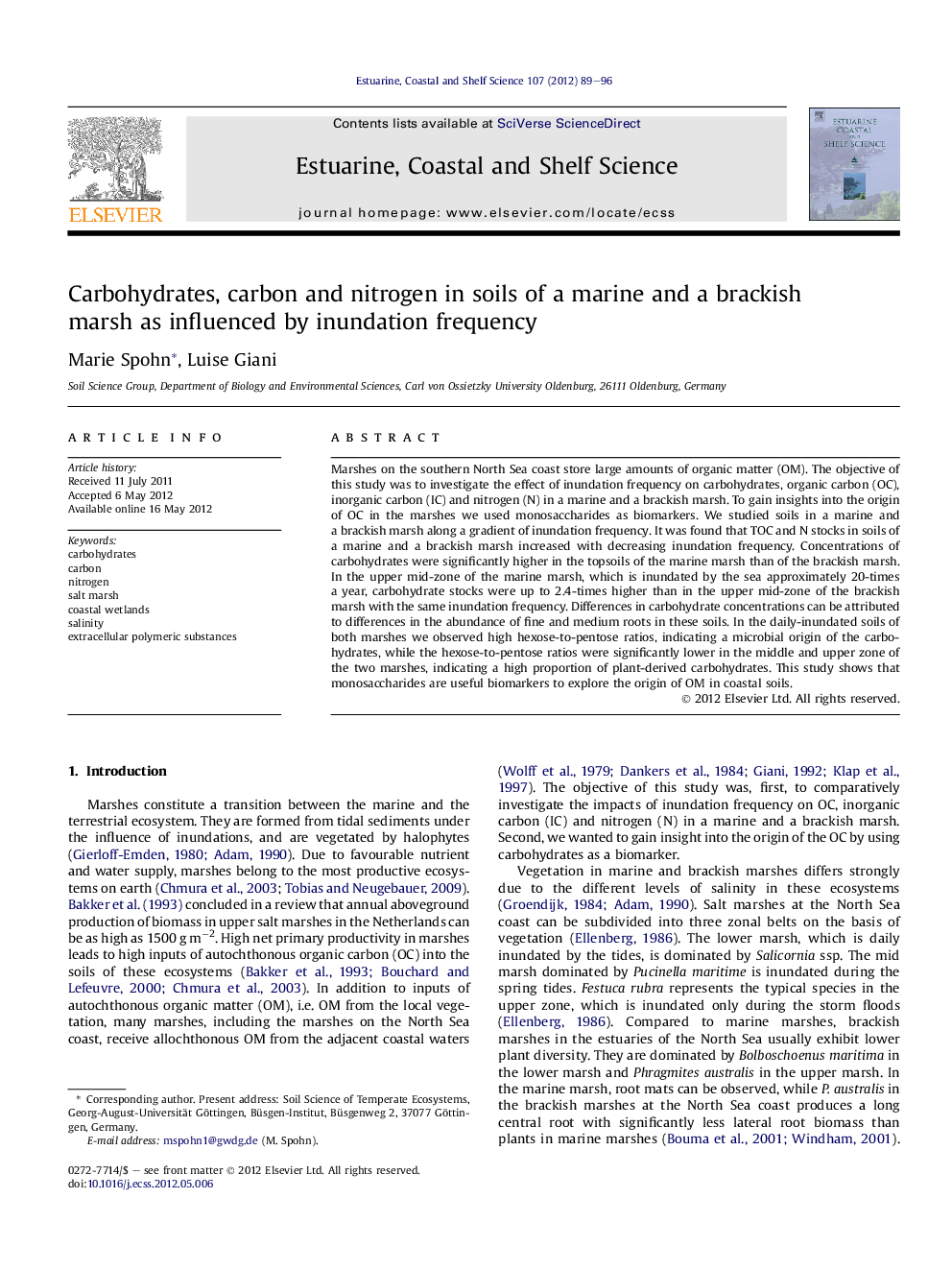| Article ID | Journal | Published Year | Pages | File Type |
|---|---|---|---|---|
| 4540223 | Estuarine, Coastal and Shelf Science | 2012 | 8 Pages |
Marshes on the southern North Sea coast store large amounts of organic matter (OM). The objective of this study was to investigate the effect of inundation frequency on carbohydrates, organic carbon (OC), inorganic carbon (IC) and nitrogen (N) in a marine and a brackish marsh. To gain insights into the origin of OC in the marshes we used monosaccharides as biomarkers. We studied soils in a marine and a brackish marsh along a gradient of inundation frequency. It was found that TOC and N stocks in soils of a marine and a brackish marsh increased with decreasing inundation frequency. Concentrations of carbohydrates were significantly higher in the topsoils of the marine marsh than of the brackish marsh. In the upper mid-zone of the marine marsh, which is inundated by the sea approximately 20-times a year, carbohydrate stocks were up to 2.4-times higher than in the upper mid-zone of the brackish marsh with the same inundation frequency. Differences in carbohydrate concentrations can be attributed to differences in the abundance of fine and medium roots in these soils. In the daily-inundated soils of both marshes we observed high hexose-to-pentose ratios, indicating a microbial origin of the carbohydrates, while the hexose-to-pentose ratios were significantly lower in the middle and upper zone of the two marshes, indicating a high proportion of plant-derived carbohydrates. This study shows that monosaccharides are useful biomarkers to explore the origin of OM in coastal soils.
► Carbon and nitrogen stocks in soils of a marine and a brackish marsh were negatively correlated with inundation frequency. ► Concentrations of carbohydrates were significantly higher in the topsoils in the marine than in the brackish marsh. ► Differences in carbohydrate concentrations in soils of the marine and the brackish marsh could be attributed to root abundance. ► Carbohydrates in the most frequently inundated topsoils exhibited high proportions of microbial-derived carbohydrates. ► Carbohydrates in the less frequently inundated topsoils were mostly plant-derived.
